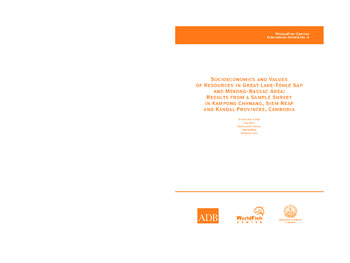Socioeconomics and values of resources in great Lake-Tonle Sap and Mekong-Bassac area : results from a sample survey in Kampong Chhnang, Siem Reap and Kandal provinces, Cambodia
Abstract
A study aims to describe the range and value of benefits derived from aquatic resources by different stakeholders, and to provide a substantive basis for redirecting policies and future development projects into harnessing and sustaining the socioeconomic benefits and resource values in the Tonle Sap area. The results of this study show that households in the Tonle Sap area were highly dependent on aquatic and other natural resources for livelihoods and income. Almost all households had diversified livelihood strategies, incorporating fishing, fish processing, farming and other occupations. Aquatic resources in the Tonle Sap area provided a wide range of use values for dependent users. Fish catches were sold for income generation, consumed fresh by the household, processed and preserved for later household consumption (thereby providing food security), and used as input or feed for aquaculture. Likewise, rice and crop farming, as well as collection of common pool resources, such as aquatic plants, animals and firewood, provided income and food for household consumption. Overall, fishing and related activities generated 61% ofhousehold income, and fishing (or fish culture) represented the single most lucrative income generating activity in all village types

